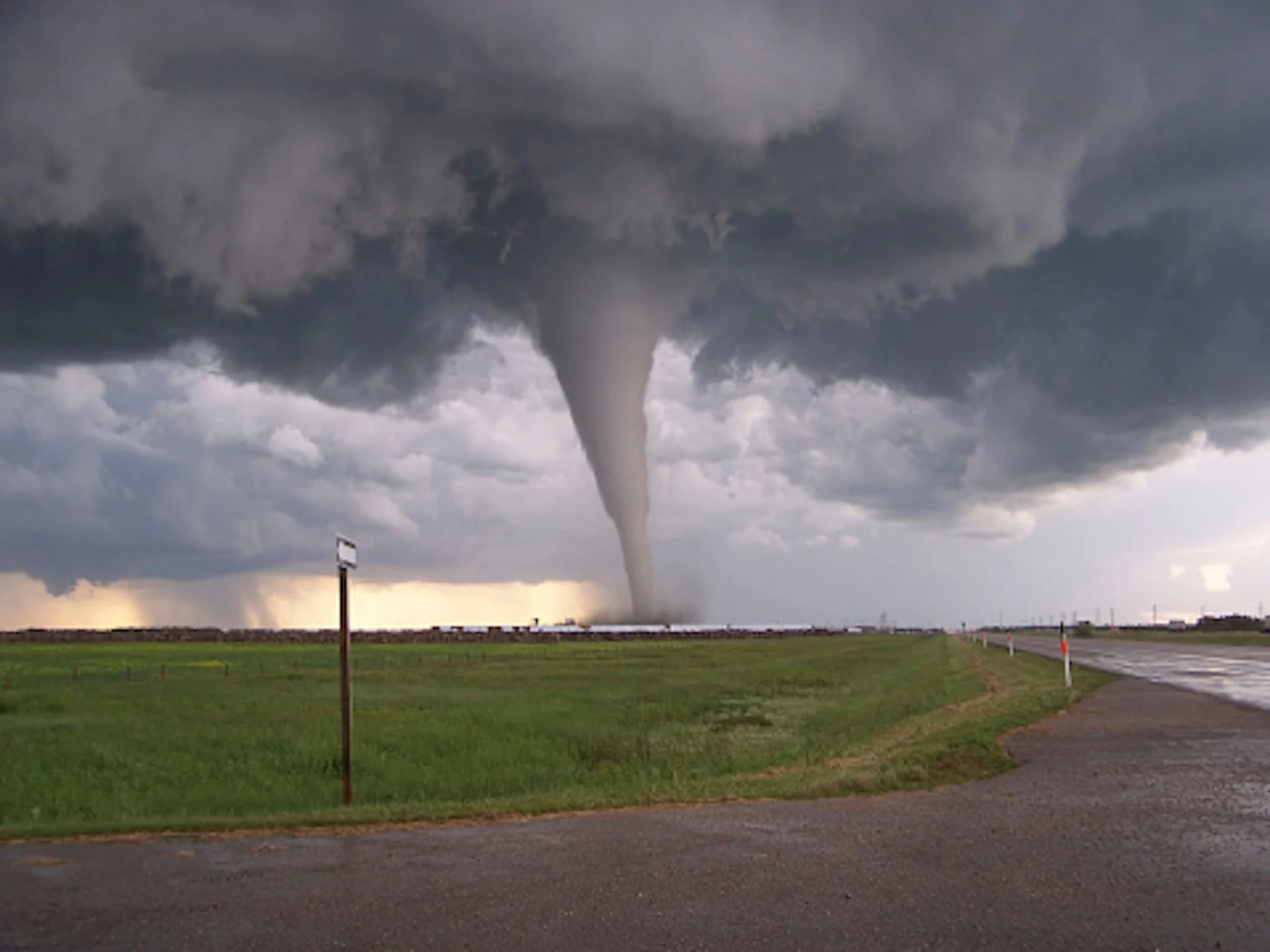
How severe weather alerts are issued, and potentially save lives
When you only have seconds or minutes to get to safety during a tornado, warnings can be the difference between life and death.
In 2023, Canada experienced its strongest tornado since 2018 after an EF-4-rated twister struck Didsbury, Alta., on Canada Day. Miraculously, no one was killed and there were only a few minor injuries.
In a situation like that, weather alerts are absolutely critical because they can save lives.
"Since the beginning of [Northern Tornadoes Project] NTP in 2017, we’ve seen a number of tornado events where ‘emergency alerts,' particularly warnings delivered by cellphones, have provided Canadians the time they need to take action, and protect themselves and their families," said Dave Sills, executive director of NTP, in a statement emailed to The Weather Network.
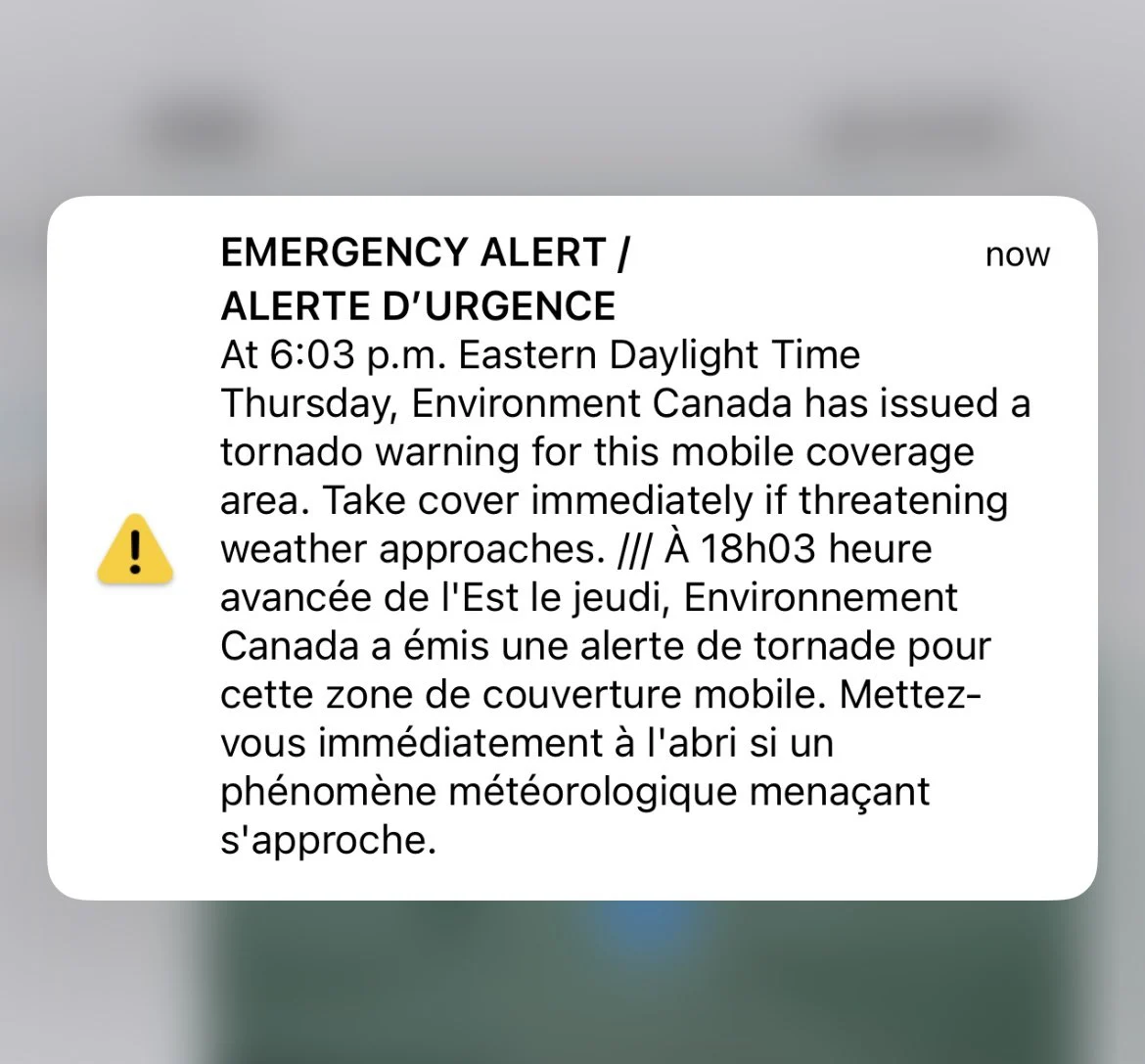
Example. Not a real-time alert. (Nathan Howes/The Weather Network)
SEE ALSO: Crews find destructive Canada Day tornado in Alberta was an EF4
Major cities not immune from tornado threats
When it comes to issuing weather watches and warnings, Environment and Climate Change Canada (ECCC) is responsible.
This year, in particular, saw many major metropolitan communities such as Ottawa, Ont., and Montreal, Que., included under a tornado warning at some point. Ultimately, that debunks the wildly dangerous myth that tornadoes don’t/can’t impact major cities.
Samantha Bayard, a spokesperson for ECCC, told The Weather Network through email that its meteorologists use numerous sources of information to determine if severe weather is likely to occur. That includes current observations, satellite imagery, radar data and weather forecast models.
"When it is determined that an alert is needed based on the expected impact to Canadians, the meteorologist prepares the alert information in the Environment and Climate Change Canada (ECCC) forecast system where it is sent out for dissemination," said Bayard.
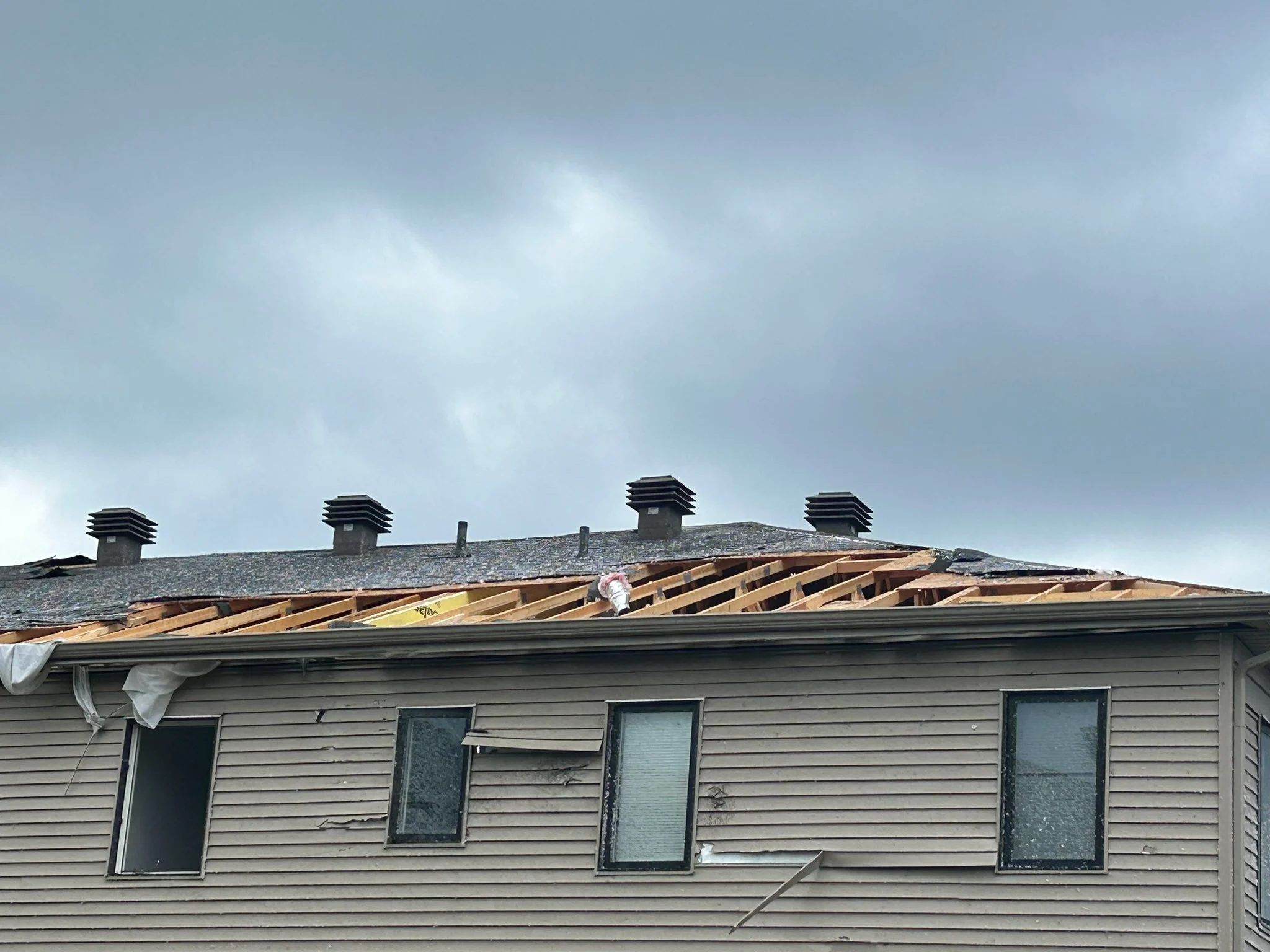
(Laurie Gillespie/Submitted to The Weather Network)
ECCC weather alerts are disseminated simultaneously to Canadians through its website, WeatherCan app, Weatheradio and to the National Alert Aggregation and Dissemination (NAAD) system. Third parties such as websites, TV and radio, and cellphone apps access alerts via the NAAD system and further disseminate them to Canadians.
The Weather Network distributes those warnings on this website, on television, on smartphones through our apps, by text messages and to other broadcasters through Alert Ready.
Watches versus warnings
In order to alert the public of the potential severe weather, while at the same time ensuring that they do not cause unwarranted alarm, a watch is issued. As the name implies, a watch means that forecasters are watching for severe weather conditions (thunderstorm, tornado, winter storm, etc.) to develop.
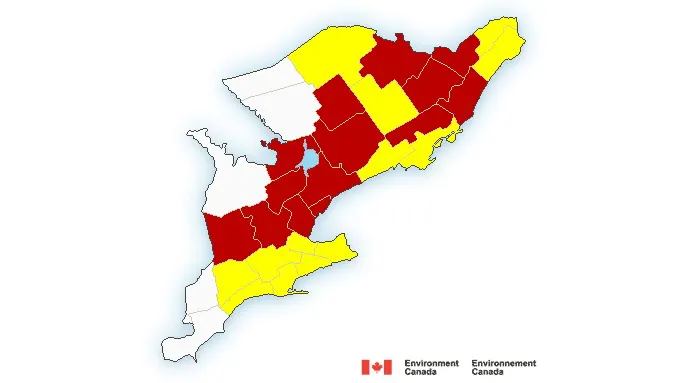
Example only. Not a real-time alert page. (Environment and Climate Change Canada)
When conditions advance past simply having the potential for severe weather, and severe weather is actually developing or occurring, forecasters issue a warning. Exactly when a warning is issued usually depends on what kind of weather is expected.
To warn the public of the risks of twisters, ECCC issues tornado watches and severe thunderstorm warnings, as well as tornado warnings."A severe thunderstorm warning can also include wording [that] describes a risk of tornadoes if an ECCC meteorologist forecasts the potential for the development of tornadoes, but none have yet been observed," said Bayard.
To alert the media, ECCC also issues a thunderstorm outlook on social media in the days leading up to a potential summer severe weather event.
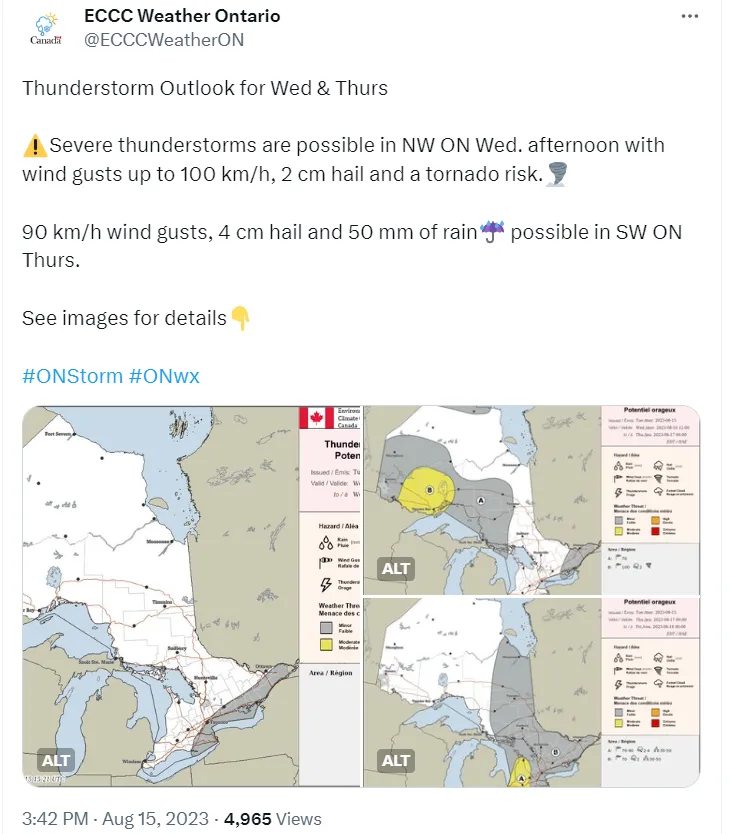
Example. Not a real-time post. (Environment and Climate Change Canada)
ECCC has a set of criteria for what constitutes a warning, which varies by province in Canada. The list of defined weather or environmental parameters, and their associated values, for each province can be found here.
Alert Ready used to provide critical, life-saving information
For immediate threat to life situations, such as when tornadoes or the upper-most severe thunderstorms (130 km/h or greater winds, seven centimetres or larger hail) are forecast, the NAAD system will trigger the immediate broadcast of the alert via radio, television stations and mobile devices in the area through Canada's National Public Alerting System (NPAS), Bayard noted.
The system provides emergency management organizations countrywide with the capability to quickly warn the public of imminent or unfolding hazards to life. Part of its public awareness campaign is Alert Ready, designed to deliver critical and potentially life-saving alerts to Canadians, including but not limited to tornadoes, flooding, fires and Amber Alerts.

Provincial, territorial, and federal public safety authorities are responsible for issuing the alerts. However, there is a multi-step process in delivering these alerts to the Canadian public. Each stakeholder plays a unique and vital role in Alert Ready.
NTP, ECCC working on improving alerts
ECCC has faced public scrutiny over the delayed timing of its alerts, particularly during the 2021 Barrie, Ont., tornado.
Sills said the warning delivery system can only be "as good as the accuracy and timeliness" of the alerts that are issued by severe weather forecasters.
"Tornado warnings are sometimes issued too late, or not at all," said Sills.
"Though warning for tornadoes is very challenging, we believe that new tools based on the latest science can help," he added.
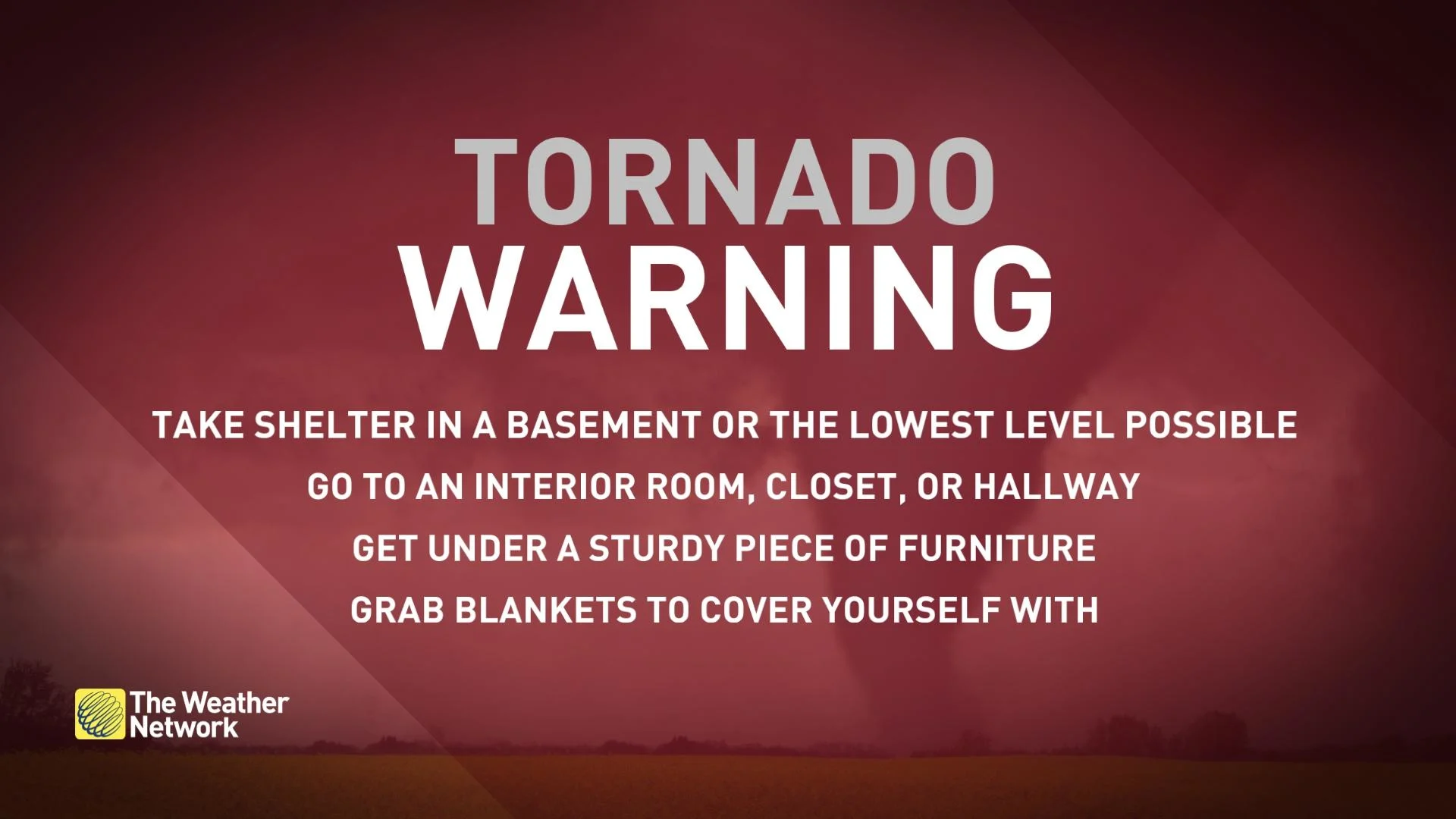
Example. Not a real-time alert.
ECCC engages in scientific research and works with academic institutions and members of the forecasting communities worldwide to improve forecasting capabilities, and to use the latest forecasting methods, Bayard stated.
"After major weather events such as a destructive tornado, ECCC forecasters will often analyze atmospheric conditions, radar images, weather model data and other relevant information to review the event and look for potential ways to improve forecast performance," said Bayard.
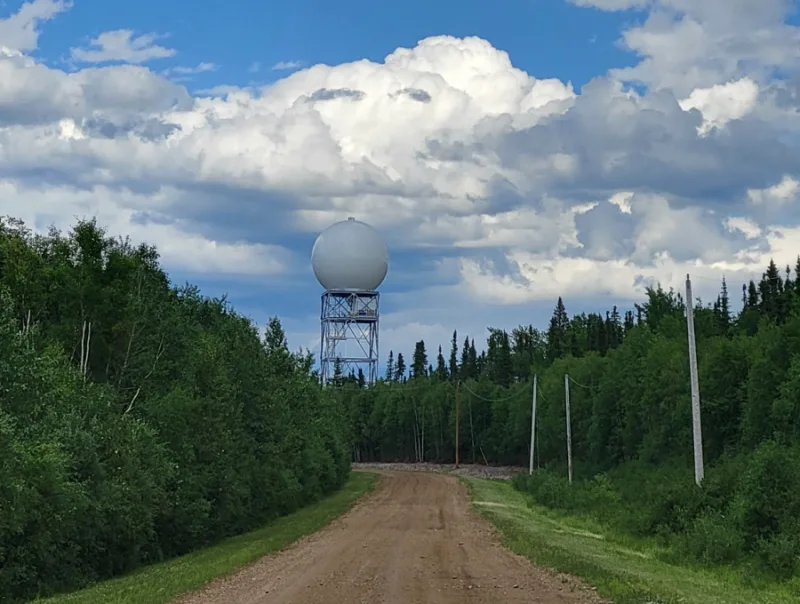
(Environment and Climate Change Canada)
"ECCC is always working to improve the technologies available to its forecasters," said Bayard.
As a result, ECCC is completing the installation of a series of new Doppler weather radars that are providing improved capabilities to detect and predict severe thunderstorms and tornadoes, as well as providing the tools needed for scientific advances, she said.
The agency is also working to improve the determination of the area under the threat of severe weather based on the storm size and motion.
Didsbury tornado survivors received emergency alert in 'good enough' time
Among those impacted by the Canada Day Didsbury tornado were Ray, Travis and Diane Kellsey. The latter was trapped in the basement of the house. Ray's son, Travis, lives across the street and was the one who rescued his mother, Diane, from the rubble.
Ray told The Weather Network that the farm, which has been in the family since 1944, contained a house on the site that his son lived in. The house was destroyed by the tornado.
"Everybody is fine. No scrapes, no nothing," Ray said.
While Ray wasn't there when the tornado went through, he was told by Diane and Travis that they received the emergency alert on their cellphones in "good enough time" to reach the basement before the twister hit.
Tornado safety
Courtesy of the Canadian Red Cross, here are some tips for staying safe during a tornado.
Identify a safe place in your home where household members and pets will gather during a tornado: A basement, storm cellar or an interior room on the lowest floor with no windows.
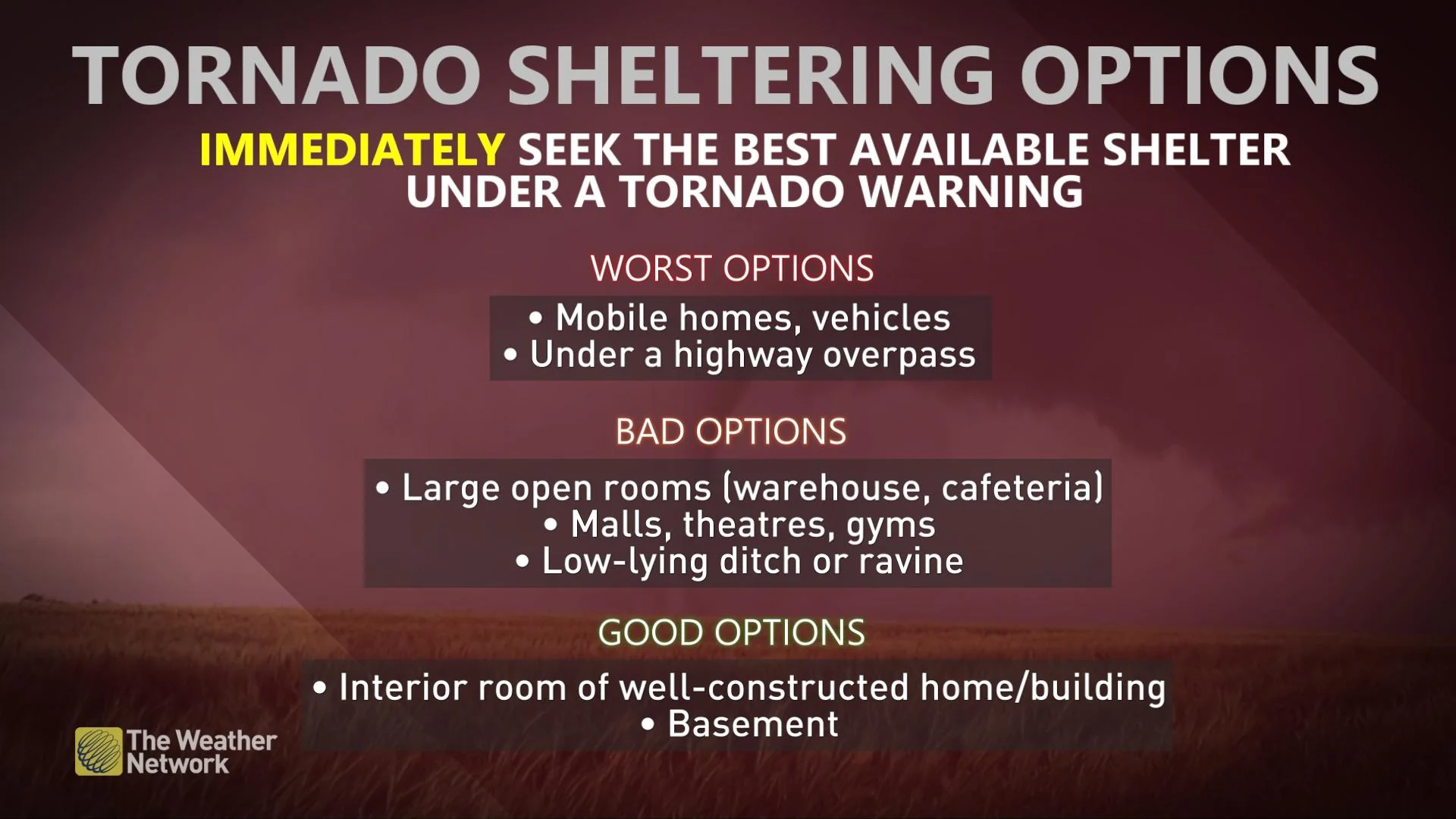
In a high-rise building, pick a hallway in the centre of the building. You may not have enough time to go to the lowest floor.
In a mobile home, choose a safe place in a nearby sturdy building. If your mobile home park has a designated shelter, make it your safe place. No mobile home, however it is configured, is safe in a tornado.
Additional tip: You'll also want to make sure you are wearing good shoes. If your area takes a direct hit, you do not want to walk through a debris field barefoot.
EDITOR'S NOTE: The Weather Network's parent company, Pelmorex Corp., operates the National Alert Aggregation and Dissemination (NAAD) system.
WATCH: Alberta tornado trapped a women in the basement of her home
With files from Scott Sutherland, meteorologist and science writer at The Weather Network.
Thumbnail courtesy: Getty Images.
Follow Nathan Howes on the X platform, formerly known as Twitter.






